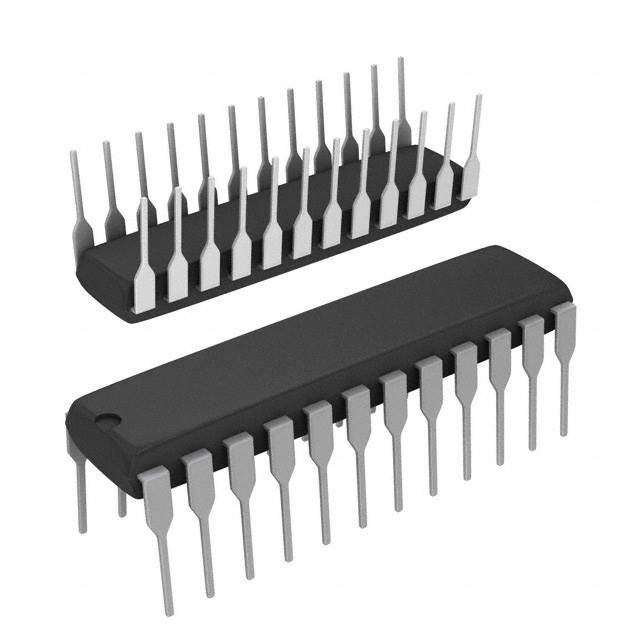Consulte las especificaciones para obtener detalles del producto.

AD7247ABN
Product Overview
Category
AD7247ABN belongs to the category of digital-to-analog converters (DACs).
Use
It is primarily used for converting digital signals into analog voltages.
Characteristics
- High precision and accuracy
- Low power consumption
- Wide operating voltage range
- Fast settling time
- Excellent linearity
Package
AD7247ABN comes in a small outline integrated circuit (SOIC) package.
Essence
The essence of AD7247ABN lies in its ability to convert digital data into precise analog voltages, making it suitable for various applications requiring accurate analog outputs.
Packaging/Quantity
The product is typically packaged in reels or tubes, with a quantity of 100 units per package.
Specifications
- Resolution: 12 bits
- Number of Channels: 4
- Supply Voltage Range: 2.7V to 5.5V
- Operating Temperature Range: -40°C to +85°C
- Output Voltage Range: 0V to Vref
Detailed Pin Configuration
- VDD: Power supply voltage
- VREF: Reference voltage input
- AGND: Analog ground
- AOUT1: Analog output channel 1
- AOUT2: Analog output channel 2
- AOUT3: Analog output channel 3
- AOUT4: Analog output channel 4
- DGND: Digital ground
- DIN: Serial data input
- SCLK: Serial clock input
- SYNC: Chip select input
- LDAC: Load DAC input
- CLR: Clear input
- VSS: Ground
Functional Features
- Serial interface for easy integration with microcontrollers
- Simultaneous update of all channels
- Internal reference voltage generator
- Power-down mode for reduced power consumption
- Software and hardware LDAC control
Advantages
- High precision and accuracy ensure reliable analog outputs
- Low power consumption makes it suitable for battery-powered applications
- Wide operating voltage range allows compatibility with various systems
- Fast settling time enables quick response to digital inputs
- Excellent linearity ensures faithful reproduction of analog signals
Disadvantages
- Limited output voltage range may not be suitable for certain applications requiring higher voltages
- Lack of built-in protection features may require additional circuitry for robust operation in harsh environments
Working Principles
AD7247ABN utilizes a combination of digital-to-analog conversion techniques, including resistor ladder networks and switching mechanisms, to convert digital data into corresponding analog voltages. The internal reference voltage generator provides the necessary reference for accurate conversion.
Detailed Application Field Plans
AD7247ABN finds applications in various fields, including: 1. Industrial automation: Control of analog actuators and sensors 2. Audio equipment: Digital audio signal processing and volume control 3. Instrumentation: Calibration and measurement systems 4. Communication systems: Analog modulation and demodulation 5. Automotive electronics: Control of analog signals in automotive systems
Detailed and Complete Alternative Models
- AD5621: 12-bit DAC with single channel output
- AD5660: 16-bit DAC with quad channel output
- AD5754: 16-bit DAC with current output capability
- AD5766: 20-bit DAC with simultaneous update feature
These alternative models offer different resolutions, channel configurations, and additional features to cater to specific application requirements.
Word count: 497 words
Enumere 10 preguntas y respuestas comunes relacionadas con la aplicación de AD7247ABN en soluciones técnicas
Sure! Here are 10 common questions and answers related to the application of AD7247ABN in technical solutions:
Q: What is the AD7247ABN? A: The AD7247ABN is a digital-to-analog converter (DAC) chip that converts digital signals into analog voltages.
Q: What is the resolution of the AD7247ABN? A: The AD7247ABN has a resolution of 12 bits, meaning it can represent analog voltages with 4096 different levels.
Q: What is the operating voltage range of the AD7247ABN? A: The AD7247ABN operates from a single power supply voltage ranging from +2.7V to +5.5V.
Q: How many channels does the AD7247ABN have? A: The AD7247ABN has 4 independent DAC channels, allowing for simultaneous conversion of multiple signals.
Q: What is the output voltage range of the AD7247ABN? A: The AD7247ABN has a programmable output voltage range, typically ±10V or ±5V, depending on the external reference voltage used.
Q: Can the AD7247ABN be controlled using a microcontroller? A: Yes, the AD7247ABN can be easily interfaced with a microcontroller using standard digital communication protocols such as SPI or I2C.
Q: Does the AD7247ABN require any external components for operation? A: Yes, the AD7247ABN requires an external reference voltage source and a few passive components for proper operation.
Q: What is the settling time of the AD7247ABN? A: The settling time of the AD7247ABN is typically 10μs, which refers to the time it takes for the output voltage to stabilize after a change in the digital input.
Q: Can the AD7247ABN be used in precision measurement applications? A: Yes, the AD7247ABN offers good linearity and low integral nonlinearity (INL), making it suitable for precision measurement applications.
Q: Are there any evaluation boards or reference designs available for the AD7247ABN? A: Yes, Analog Devices provides evaluation boards and reference designs that can help users quickly prototype and evaluate the AD7247ABN in their applications.
Please note that these answers are general and may vary depending on specific application requirements and conditions.

